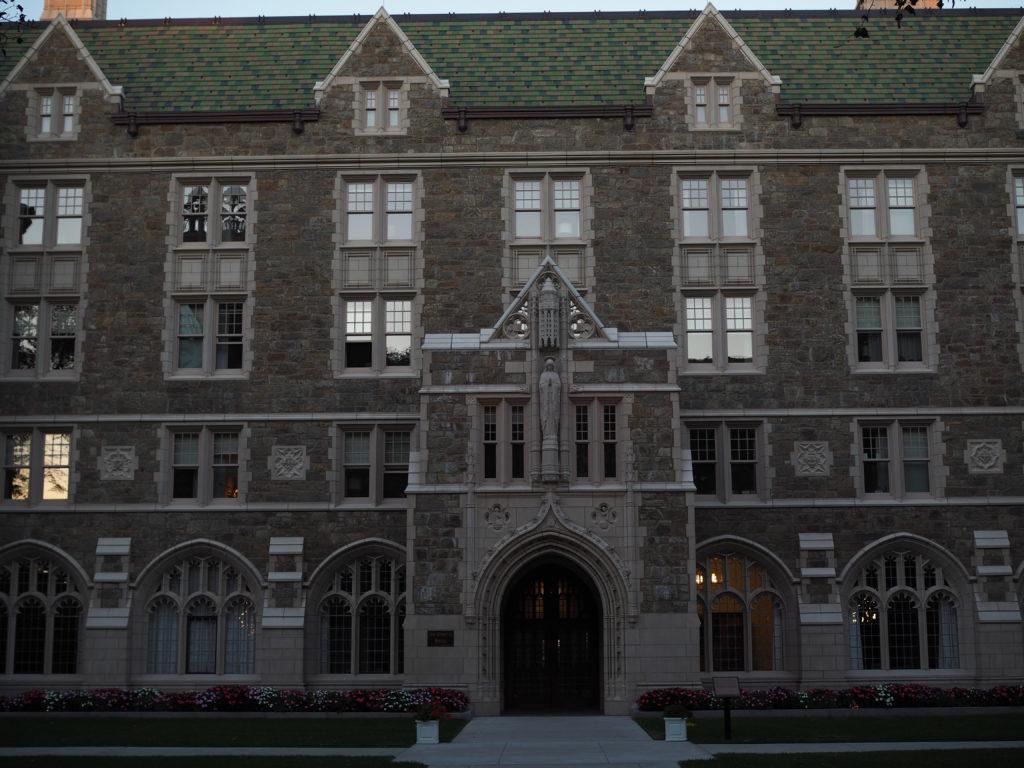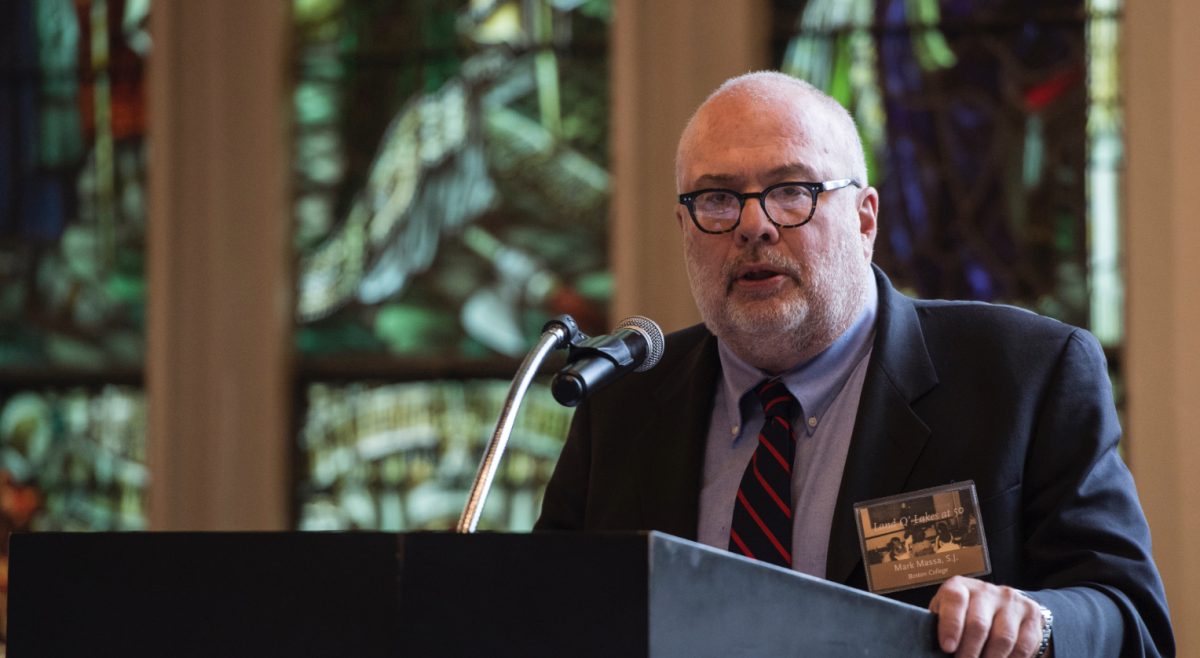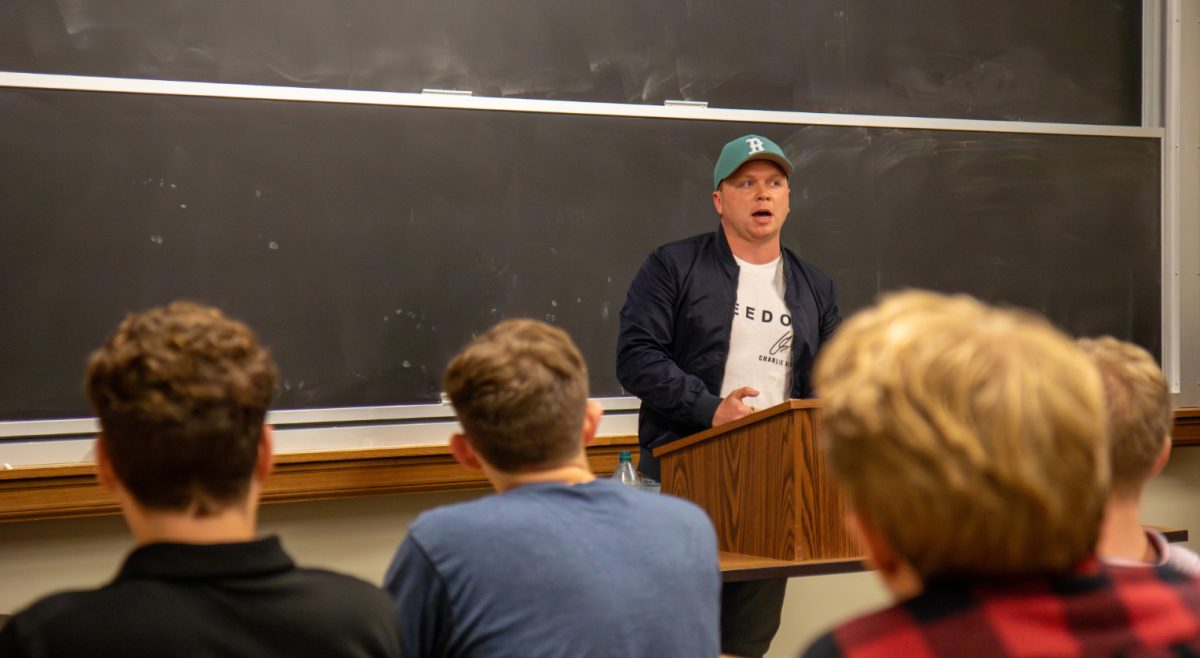Political science professor Peter Krause discussed the history and implications of the Israeli-Palestinian conflict on Wednesday in the Vanderslice Cabaret Room, in an event organized by the Eagle Political Society.
Krause began by giving a brief summary of the history of the conflict and the two national movements that are pushing for statehood: the Zionist and the Palestinian national movements.
Krause explained the Zionist movement and the ultimate push for the creation of an independent Israeli state because of concerns over persecution and assimilation of Jewish people. After World War II, as greater numbers of Jewish people wanted a state that would protect a national identity, Israel took over the land that was originally designated as the “Palestine Mandate” in the 1920s. The Zionist movement was largely successful in establishing an independent state—the complicated territorial conflict over the Gaza strip and the West Bank, however, has persisted since the 1960s.
According to Krause, the Palestinian National Movement has struggled due to its fragmented nature, especially thanks to the divisions between Fatah and Hamas—the two major groups making up the Palestinian movement.
“Whereas the Zionists were able to have a ‘hegemonic’ movement, the Palestinians have been very fragmented internally, and that’s really hurt the progress of them achieving the state of Palestine,” Krause said.
Krause attributes the Zionist movement’s success to several factors: it had a dominant military group, the Haganah, and additionally got support from various Western countries, including the United States. Palestinians, on the other hand, have not been able to gain major power supporters. Since Arab states have their own interests, they are supporting their own state interests rather than giving effective support to the Palestinian movement.
Krause then shifted to address the role of the United States in the conflict. After Harry Truman’s recognition of Israeli independence in 1948, and especially in the 1960s and ’70s, Israel became a key U.S. proxy state in the Middle East. Historically, both Democratic and Republican Presidents have supported Israel, and America is considered Israel’s most important ally.
“The U.S. also helped to negotiate a number of peace treaties with the Israelis, the Camp David Accords and later in 1994 a peace treaty with Jordan,” Krause said.
Krause additionally cited the importance of having a third party mediator to make sure any type of peace deal is held up, which inherently presents challenges, as such mediation requires commitment of various nations and entangles foreign troops in the conflict.
The professor then discussed the Oslo peace process, which aimed to deescalate the tensions between Israelis and Palestinians. The “Track-II” negotiations—in which lower-ranking members on each side engaged—created the Palestinian Authority as a pre-state governmental body.
In terms of outcomes to the Israeli-Palestinian conflict, Krause explained two perspectives on two outcomes to the conflict. One outcome is an Israeli or Palestinian one-state solution, whereas the other is a two-state solution with certain caveats regarding governance and annexation of settlements.
In Krause’s view, since Israel is the stronger power, in the short term the most likely solution is an Israeli one-state solution. He believes, however, that it’s likely the current uncertainty and status quo will continue to persist for a time.
“Even though we can talk about these final solutions for the conflict, it may be very likely that the next five, 10, 20 years we just keep saying the same thing,” Krause said.
Featured Image by Celine Lim / Heights Staff













